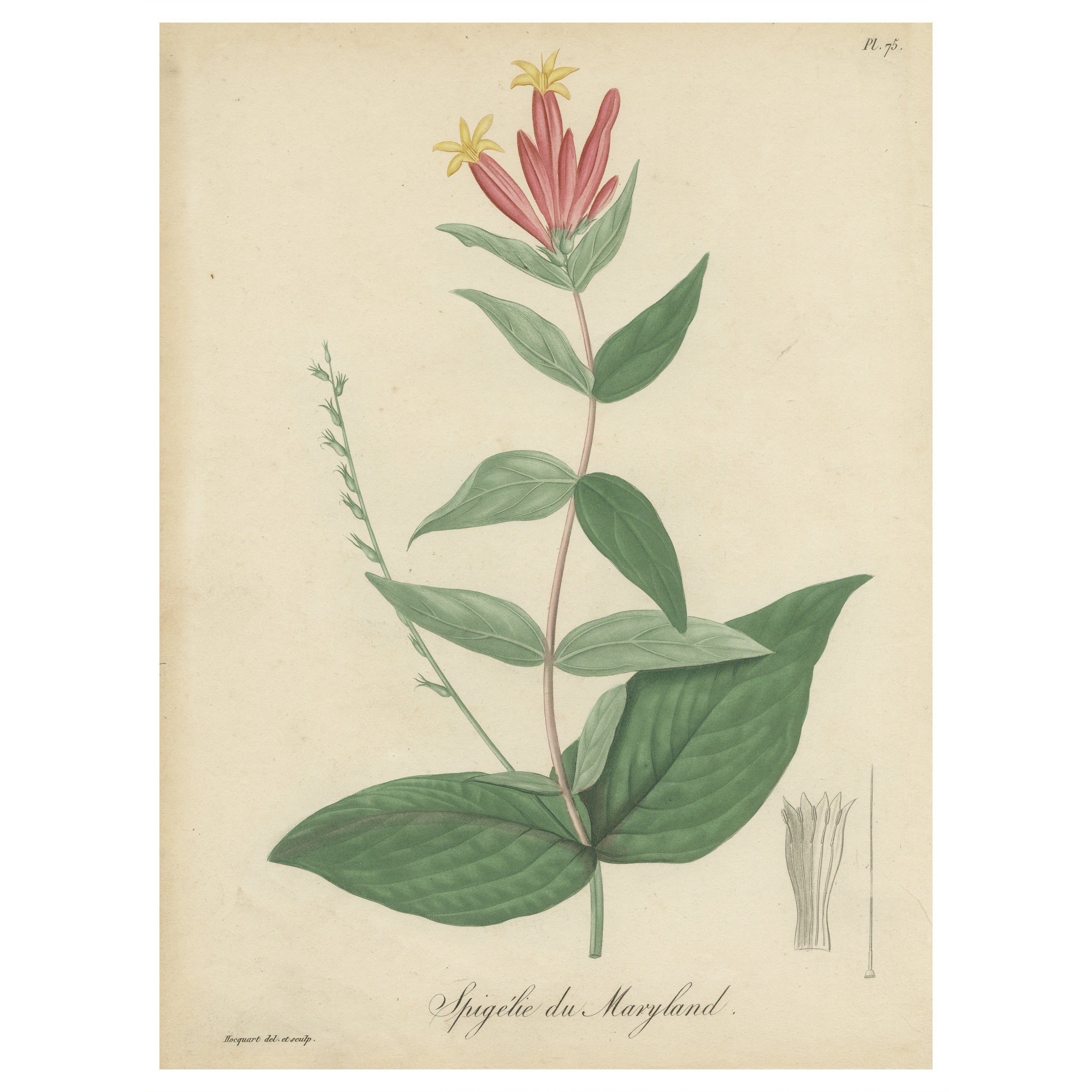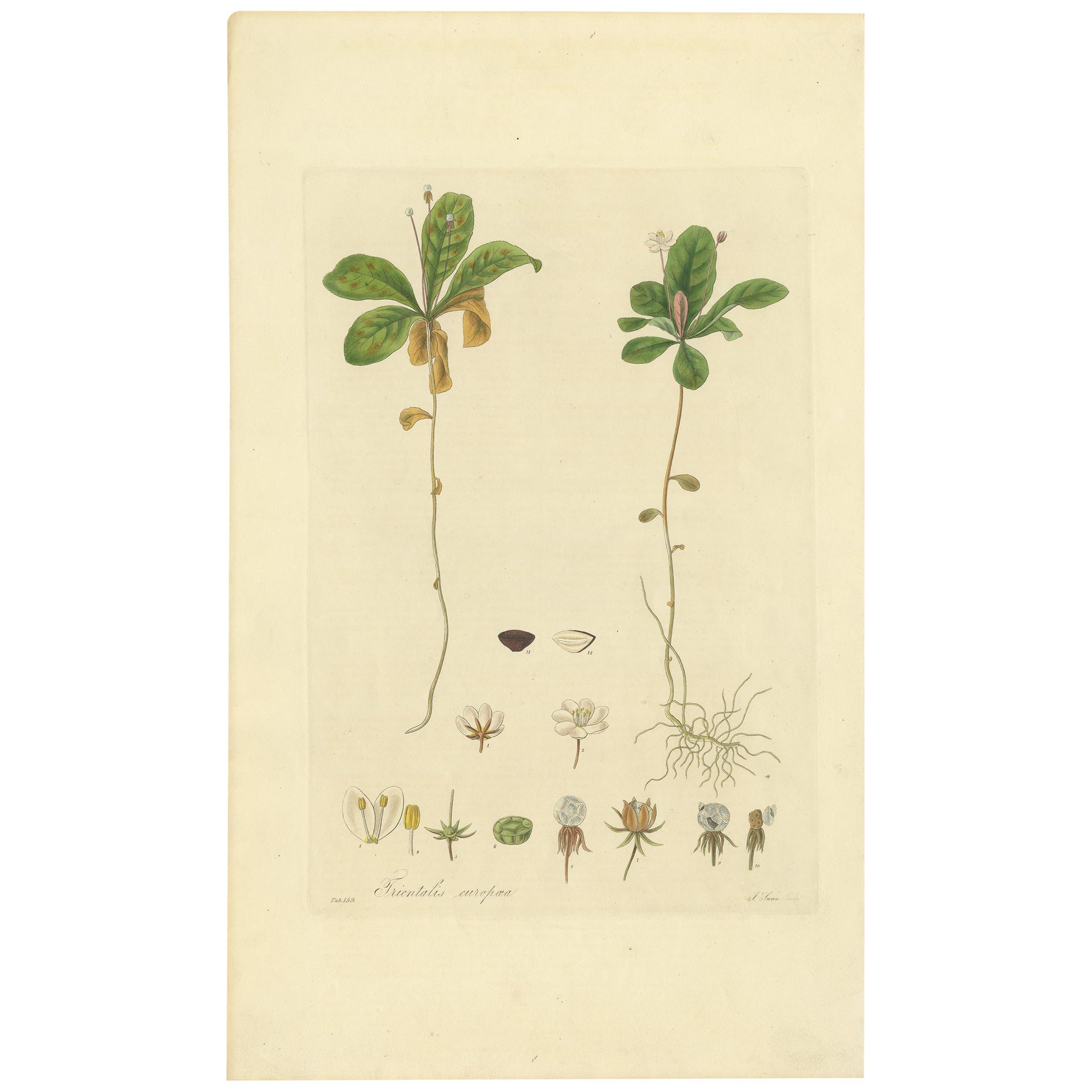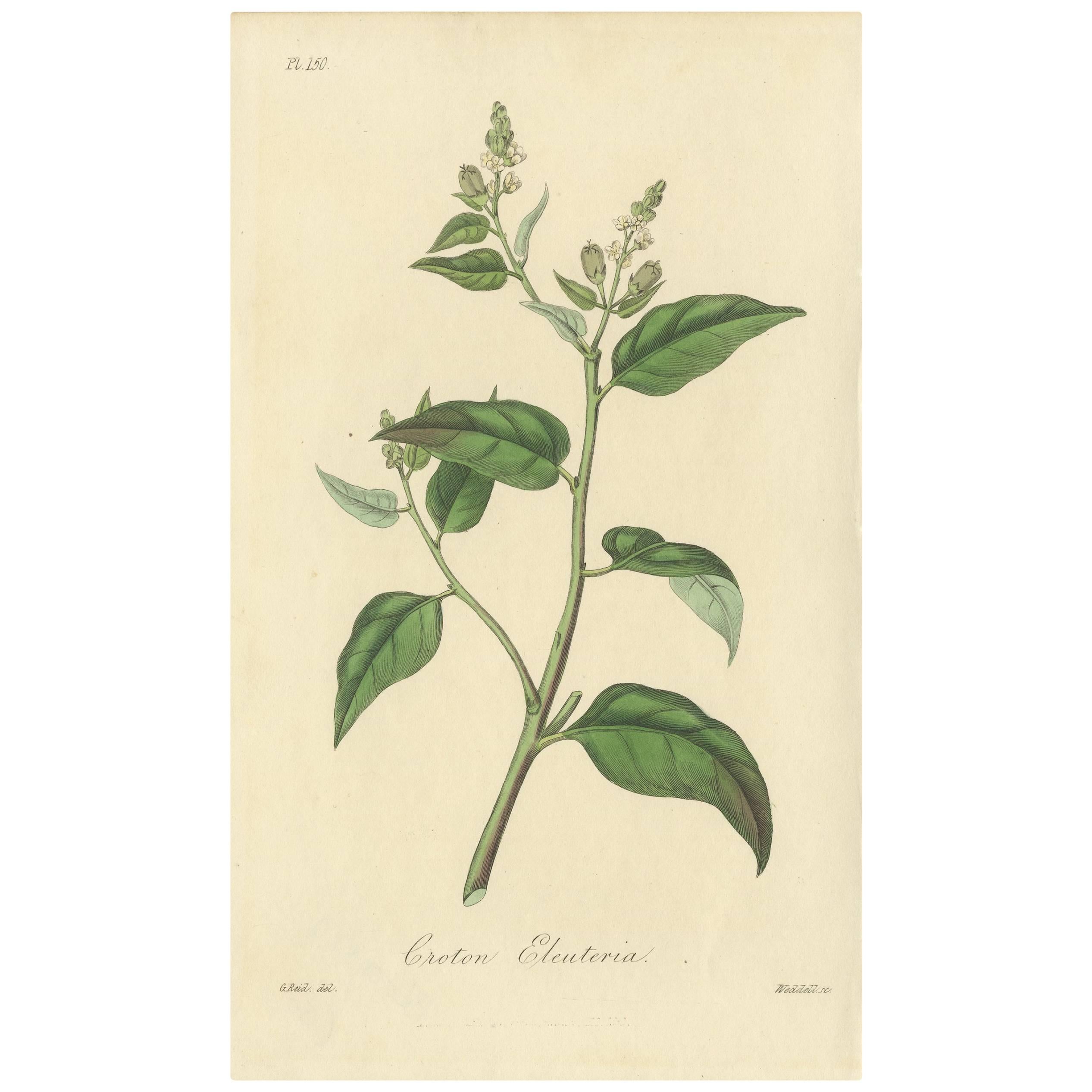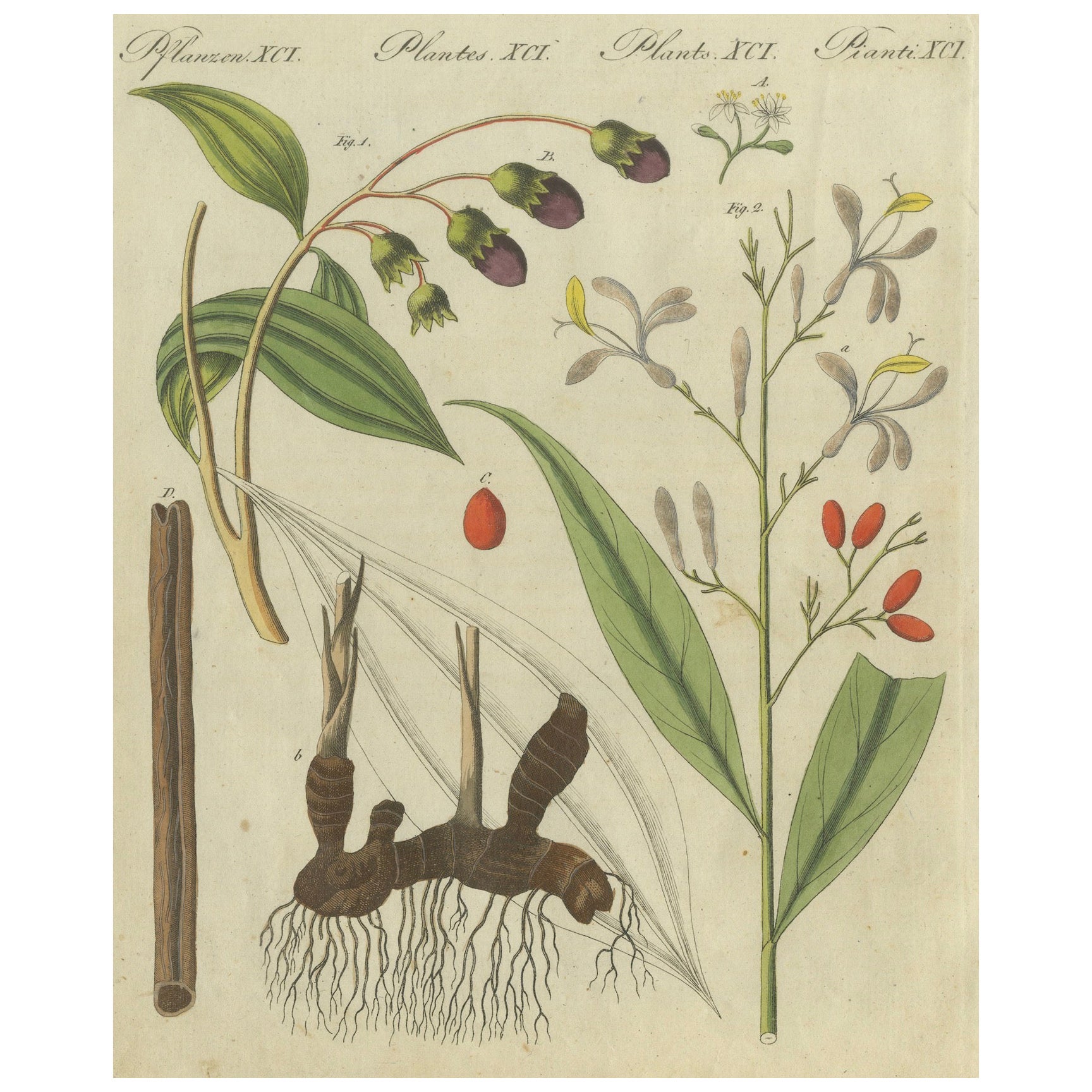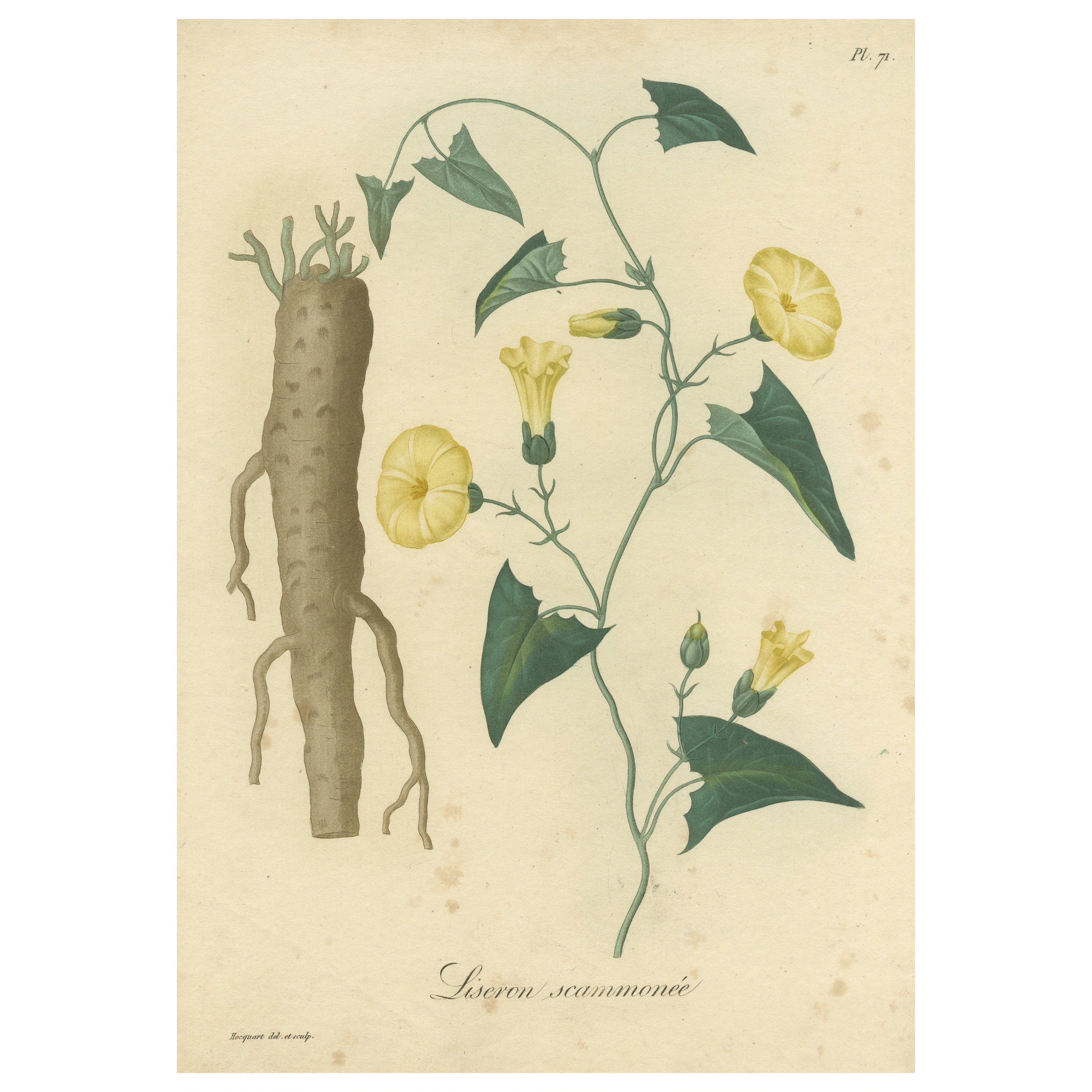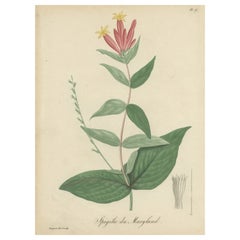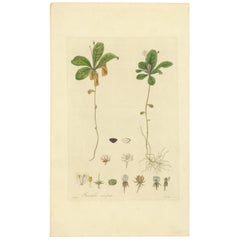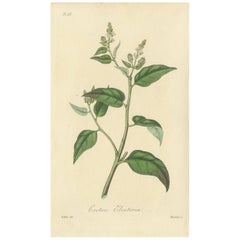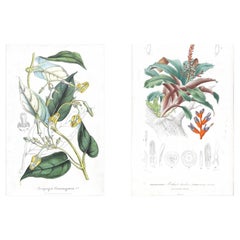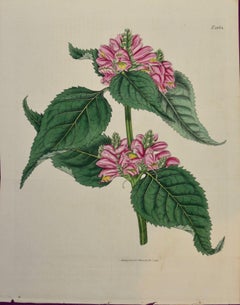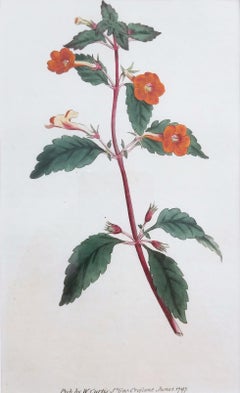Items Similar to Floral Elegance of the Americas: A Botanical Print of a Spigelia Species, c.1821
Want more images or videos?
Request additional images or videos from the seller
1 of 8
Floral Elegance of the Americas: A Botanical Print of a Spigelia Species, c.1821
$162.95
$203.6820% Off
£121.30
£151.6320% Off
€136
€17020% Off
CA$223.20
CA$27920% Off
A$248.24
A$310.3120% Off
CHF 129.63
CHF 162.0320% Off
MX$3,020.87
MX$3,776.0820% Off
NOK 1,655.51
NOK 2,069.3920% Off
SEK 1,552.58
SEK 1,940.7320% Off
DKK 1,035.32
DKK 1,294.1520% Off
Shipping
Retrieving quote...The 1stDibs Promise:
Authenticity Guarantee,
Money-Back Guarantee,
24-Hour Cancellation
About the Item
Antique botanical print titled 'Spigelia Anthelminthique'. This print shows the a Spigelia species, pinkroot is a common name for plants in this genus. Spigelia is a genus of flowering plants in the family Loganiaceae. It contains around 60 species, distributed over the warmer parts of the Americas, from the latitude of Buenos Aires to the Southern United States. It was named after Adriaan van den Spiegel (Adrianus Spigelius) by Carl Linnaeus in his 1753 Species Plantarum; the type species is Spigelia anthelmia. This print originates from 'Phytographie Medicale' by Joseph Roques. Engraved by Édouard Auguste Patrice Hocquart. Published circa 1821.
Édouard Auguste Patrice Hocquart (1789–1870), frequently cited as L. F. J. Hoquart, was a French publisher, writer, artist and engraver, noted for his colour plates illustrating Joseph R. Roques's (1772–1850) materia medica publication Phytographie médicale of 1821–1824.
More details of the plant:
The Spigelia genus, including the Spigelia anthelmintica, is special for several reasons:
1. **Medicinal Properties**: Spigelia is historically renowned for its medicinal properties, particularly as an anthelmintic, used to expel parasitic worms. The name "anthelmintica" itself suggests its use in traditional medicine for treating worm infections.
2. **Attractive Flowers**: Plants in the Spigelia genus are known for their strikingly beautiful flowers, which often have vivid colors and a unique, star-shaped appearance. The contrast between the bright pink or red petals and the yellow or greenish center makes them highly attractive and visually appealing.
3. **Habitat Diversity**: Spigelia species are adapted to a wide range of habitats in the warmer parts of the Americas. Their ability to thrive in various environmental conditions from Buenos Aires to the Southern United States showcases their ecological diversity and adaptability.
4. **Botanical Interest**: Named by Carl Linnaeus in honor of Adriaan van den Spiegel, Spigelia species hold historical significance in botany. Their classification and naming underscore the rich history of plant discovery and nomenclature.
5. **Garden Value**: Due to their striking appearance and medicinal properties, Spigelia species are valued in gardens and landscapes. They attract pollinators like hummingbirds and butterflies, adding ecological value to their aesthetic appeal.
6. **Rare and Endemic Species**: Some species within the Spigelia genus are rare or endemic to specific regions, making them of particular interest to conservationists and botanists. Their presence contributes to biodiversity and the ecological richness of their native habitats.
In summary, the Spigelia genus encompasses plants that are not only beautiful but also beneficial, historically significant, and ecologically important, making them truly special.
- Dimensions:Height: 11.93 in (30.3 cm)Width: 8.78 in (22.3 cm)Depth: 0.02 in (0.5 mm)
- Materials and Techniques:
- Period:
- Date of Manufacture:c.1821
- Condition:Age-related toning. Minor wear, blank verso. Please study image carefully.
- Seller Location:Langweer, NL
- Reference Number:Seller: BG-13584-81stDibs: LU3054338353552
About the Seller
5.0
Recognized Seller
These prestigious sellers are industry leaders and represent the highest echelon for item quality and design.
Platinum Seller
Premium sellers with a 4.7+ rating and 24-hour response times
Established in 2009
1stDibs seller since 2017
2,510 sales on 1stDibs
Typical response time: <1 hour
- ShippingRetrieving quote...Shipping from: Langweer, Netherlands
- Return Policy
Authenticity Guarantee
In the unlikely event there’s an issue with an item’s authenticity, contact us within 1 year for a full refund. DetailsMoney-Back Guarantee
If your item is not as described, is damaged in transit, or does not arrive, contact us within 7 days for a full refund. Details24-Hour Cancellation
You have a 24-hour grace period in which to reconsider your purchase, with no questions asked.Vetted Professional Sellers
Our world-class sellers must adhere to strict standards for service and quality, maintaining the integrity of our listings.Price-Match Guarantee
If you find that a seller listed the same item for a lower price elsewhere, we’ll match it.Trusted Global Delivery
Our best-in-class carrier network provides specialized shipping options worldwide, including custom delivery.More From This Seller
View AllAntique Botanical Flower Print of Spigelia Marilandica or Indian Pink, ca.1821
Located in Langweer, NL
Antique botanical print titled 'MSpigélie du Maryland'. This print shows the Spigelia Marilandica, also known as the Indian pink or woodland pinkroot. It is a herbacious perennial wi...
Category
Antique Mid-19th Century Prints
Materials
Paper
$162 Sale Price
20% Off
Free Shipping
Broad-Leaved Dock – Medicinal Plant Engraving from Plenck, Vienna c.1788
Located in Langweer, NL
Broad-Leaved Dock – Medicinal Plant Engraving from Plenck, Vienna c.1788
This hand-coloured botanical engraving features Rumex obtusifolius, commonly...
Category
Antique 1780s European Prints
Materials
Paper
$373 Sale Price
20% Off
Antique Botany Print of Trientalis Europea by Curtis, 'circa 1817'
Located in Langweer, NL
Antique botany print titled 'Trientalis Europaea'. Hand colored engraving of trientalis europaea, also known as chickweed-wintergreen or arctic starflower. This print originates from...
Category
Antique Early 19th Century Prints
Materials
Paper
$287 Sale Price
20% Off
Antique Botany Print of the Cascarilla Tree by G. Reid, 1831
Located in Langweer, NL
Handcolored botanical illustration drawn by G. Reid and engraved on steel by Weddell from John Stephenson and James Morss Churchill's "Medical Botany: ...
Category
Antique Mid-19th Century Prints
Materials
Paper
$57 Sale Price
20% Off
Exquisite Hand-Colored Botanical Engraving with Medicinal Plants, 1805
Located in Langweer, NL
Title: Hand-Colored Botanical Plate from Bertuch's "Bilderbuch für Kinder" (1805)
Description: This vibrant hand-colored copperplate engraving is part of Friedrich Johann Bertuch...
Category
Antique Early 1800s Prints
Materials
Paper
Antique Botanical Print of Convolvulus Scammonia, or Scammony, ca.1821
Located in Langweer, NL
Antique botanical print titled 'Liseron Scammonée'. This print shows the Convolvulus Scammonia, commonly known as scammony. It is a bindweed native to the countries of the eastern pa...
Category
Antique Mid-19th Century Prints
Materials
Paper
$162 Sale Price
20% Off
Free Shipping
You May Also Like
Apocynum androsamifolium - French botanical flower engraving by Bessa, c1830
By After Pancrace Bessa
Located in Melbourne, Victoria
'Apocynum androsamifolium' (Fly-trap dogbane or spreading dogbane)
Original copper-line engraving with original hand-colouring.
From 'Herbier general de l'amateur' by Jean Louis A...
Category
Early 19th Century Naturalistic Still-life Prints
Materials
Engraving
Set of Two Rare Botanical Engravings by D’Orbigny — 1849
Located in Fukuoka, JP
Set of Two Rare Botanical Engravings by D’Orbigny — Dictionnaire Universel d’Histoire Naturelle, Paris, 1849
An exquisite pair of original hand-colored botanical engravings from the...
Category
Antique 19th Century French Prints
Materials
Paper
Flowering Lyons' Chelone Botanical: A 19th C. Hand-colored Engraving by Curtis
By William Curtis
Located in Alamo, CA
This early 19th century hand-colored double fold-out botanical engraving is entitled "Chelone Major" (Flowering Lyons' Chelone plant), plate 1864, published in London in 1816 in Will...
Category
1810s Naturalistic Still-life Prints
Materials
Engraving
Cyrilla Pulchella Scarlet-Flowered Cyrilla /// English Botanical Flower Print
By William Curtis
Located in Saint Augustine, FL
Artist: William Curtis (English, 1746-1799)
Title: "Cyrilla Pulchella Scarlet-Flowered Cyrilla" (Vol. 11, Plate 374)
Portfolio: The Botanical Magazine; or, Flower-Garden Displayed
Ye...
Category
1790s Victorian Still-life Prints
Materials
Watercolor, Engraving, Intaglio
1736-45 Framed Botanical Engraving, Johann Wilhelm Weinmann
By Johann Wilhelm Weinmann
Located in Louisville, KY
Framed Botanical Engraving, Johann Wilhelm Weinmann. Johann Wilhelm Weinmann (German 1683-1741) Published in Amsterdam & Ratisbon, 1736-45....
Category
Antique Mid-18th Century German Other Prints
Materials
Velvet, Giltwood, Paper
19th c. French Framed Copper Plate Botanical Engraving on Laid Paper
Located in Wichita, KS
Copper plate engraving of the Malabar Nut by Pierre-Joseph Redouté, 1800. Engraving with original hand-coloring on laid paper with visible ribbed paper texture and plate marks. The...
Category
Antique 19th Century French Prints
Materials
Paper
More Ways To Browse
French Prints Floral
Antique Spiegel Furniture
Paul Evans Cityscape Cabinet
Perfume Cabinet
Persian Side Table
Pheasant Figure
Pill Box 800 Silver
Plaster Cherub
Psyche Bronze 19th Century French
Qing Dynasty Teapot
Quail Decorative Object
Quilted Maple
Rattan Bamboo Headboard
Regency Table Kogl
Rococo Fire Basket
Rosewood Breakfront
Saddle Horse Stand
San Remo
